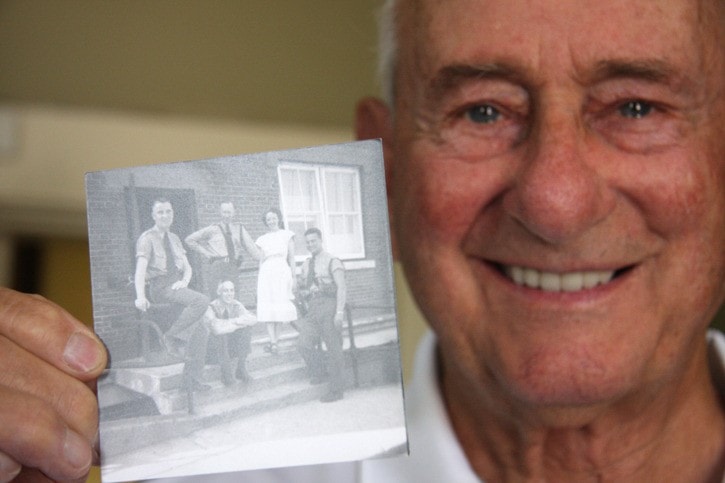Like the beacon that summoned Batman, a flashing red light on the roof of a building in East Trail used to be a sign for local officers to swing into action.
Louis Trevisan is the last surviving member of the Trail City Police and recently returned to his hometown to celebrate his 89th birthday.
Trevisan reminisced about his years with the force, when “the Gulch was going strong with all the Italians and you couldn’t go along Riverside without running into a dozen people you knew.”
According to the Trail archives, the city’s first law enforcement officer was appointed in 1896 and the Trail City Police was the local law enforcement in town up until 1949, when they amalgamated with the B.C. Provincial Police, which later became part of the RCMP.
Born in Trail in 1922, Trevisan’s police career began when he was 17 and joined the 109th Battery Artillery in Rossland for two weeks. He wrote his RCMP exam in Grand Forks when he jumped the train and enlisted in the air force to serve in World War II.
After the war, Trevisan returned to Trail where he joined the city police 1948. He described the force as a small one, but filled with camaraderie.
“Trail was a rip-roaring place in those days, it really was, and I used to break up a lot of fights,” he said with a laugh, adding that in the tight-knit community some of the people he had to arrest and put in jail — mostly for being drunk — were often people he knew very well.
He recalled times when officers would go on duck hunts, have huge dinners together at the Crown Point Hotel and watch hockey games together.
One of his sergeants gave him advice he’d never forget.
“He said, ‘Lou, make sure your charges are right, are fair and take them in in the easiest and fastest way you can because if you have to fight everybody you meet, you’ll be punch-drunk in 20 years.’”
The advice seemed to serve Trevisan well.
There were two officers on every foot patrol shift, responding to calls mostly about family fights, break and enters and raiding bootleggers, but also performed river rescues as well — it was a jack-of-all-trades job.
Officers also did their jobs without radios — they didn’t get those until the force became part of the provincial police in 1949. Their only means of radio surveillance was to listen in on taxi drivers’ radios.
Not only were they battling crooks but some people in the city police were pretty underhanded too, Trevisan said.
He recounted a story about a chief who used to call up the bootleggers and warn them before doing a raid.
Trevisan left the force in 1958, after it had gone through several changes, and moved to Santa Monica, Calif., switching from swimming in the Columbia River to body surfing in the Pacific Ocean on 10 to 15 foot waves.
While his career choice did a complete 180-degree turn — Trevisan worked in the TV production business, retiring in 1986 — he still stayed in touch with his friends from the force back home.
He even met someone in Santa Monica who knew his old police chief, John Laurie, identifiable through less than admirable traits.
“Those were some of the better parts of my life,” he stated. “I think the city police were very efficient, everyone did their job well and it made the community a little closer.”
